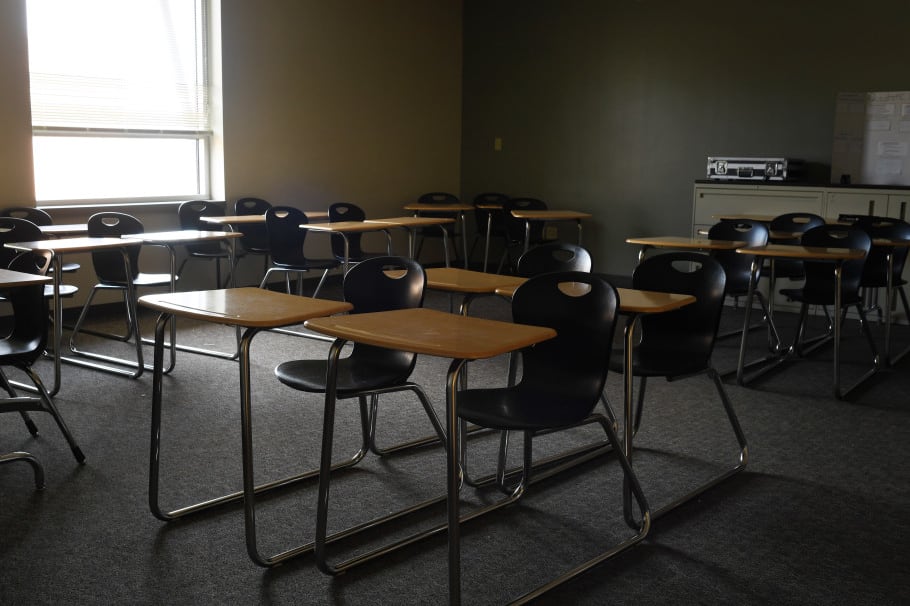As Indiana school districts begin preparing for the fall semester, some school leaders are hearing a concerning message from parents: They don’t want their children to come back.
It’s unclear what school will look like in August, after the coronavirus shut down classrooms across the state through the end of this academic year. But there are growing worries among school officials that the fallout will mean fewer students return. And in a state where funding is doled out per student, a drop in enrollment would mean an immediate financial hit to schools.
Amid the pandemic, fear of contracting the coronavirus could prompt more parents to start homeschooling long-term or transfer to a full-time virtual school. Registration could also be a hurdle. It’s more difficult to recruit families without seeing them in-person, or when they have more pressing priorities, some superintendents said.
“We will have a significant number of families who would want their children to continue to be at home trying to learn remotely,” said Wayne Township Superintendent Jeff Butts. “We already heard some of that.”
In response, school business officials are asking the state to consider freezing districts’ enrollment counts in the fall — a radical new idea. But it seems unlikely to gain traction in a state where the prevailing funding philosophy is having money follow the student.
The idea, pitched by the Indiana Association of School Business Officials, is meant to offer some financial stability by not penalizing districts for teaching fewer students. Executive Director Dennis Costerison said the freeze could work like a “hold harmless” exemption, so districts are protected from a drop but could still receive a boost in funding if they see an increase in students compared to last fall, or an increase in students who qualify as low-income.
That would help if parents choose to keep their children at home through the September count date, when schools log their official enrollment to lock in funding, but later decide to re-enroll as the coronavirus crisis evolves, Butts said.
“At some point those children most likely will come back and we will need to make sure that we are properly staffed for them,” he said. “That would be one less thing that we would have to really be worried about… as we look forward to what we anticipate to be a pretty tough budget year.”
State Superintendent Jennifer McCormick acknowledged concerns about fall enrollment earlier this month during a webinar for educators. But she didn’t say whether the freeze had garnered any support from lawmakers or the governor’s office.
“I have not had any indication that there is going to be a freeze on [enrollment counts],” McCormick said. “But I know that conversation has been requested.”
When Chalkbeat told Republican House Education Chairman Bob Behning about those hoping for an enrollment freeze, he called it a “pipe dream.” The state has “always prided ourselves on dollars following the kid,” said Behning, a top education policymaker.
A hold harmless on enrollment would potentially mean the state is giving out funding for one student twice, he said — once to their former district and once to their new virtual program.
“I think it’s way too premature for us to make any type of decision as far as that is concerned,” Behning said. “I can guarantee you, unless your economy has a rapid pick up ... the state is not going to have the resources to hold harmless.”
Education makes up about half of the state budget, which leaves schools particularly vulnerable to the expected hit to both sales and income tax after the coronavirus shut down parts of the economy and sent unemployment claims soaring.
So far, Butts said Wayne Township has 20% fewer students registered for next school year from outside the district compared to this time in previous years — an early indicator because out-of-district families typically enroll their children sooner. It’s a number he’s watching closely as administrators try to prepare for multiple potential approaches to school in the fall.
Gov. Eric Holcomb has not announced whether school buildings will be allowed to reopen, or what new health or safety stipulations they will have to meet. That decision will likely come later this month, Holcomb said. In the meantime, districts are preparing for everything from continuing remote learning to bringing students back in waves to reopening with social distancing.
Pike Township Schools is among the districts in Indiana considering continuing remote learning even if schools are allowed to reopen by creating a voluntary online school option for families who may want to keep their children home.
It’s an option many districts are considering, and even prior to the coronavirus shutdown some school systems had some form of online offerings for students. U.S. Secretary of Education Betsy DeVos is also encouraging states to expand virtual education.
With the summer to plan, Superintendent Flora Reichanadter said teachers will be able to offer more rigorous online learning five days a week, compared to the three days a week students are doing now.
But it’s difficult to plan for that scenario and decide how many teachers are needed if you don’t know how many students will show up or what your budget will be, Reichanadter said.
“It is not on people’s minds right now ... to go register for the next school year,” she said. “Parents really want answers to things I can’t give them right now, and they are frustrated about that. And I understand.”






